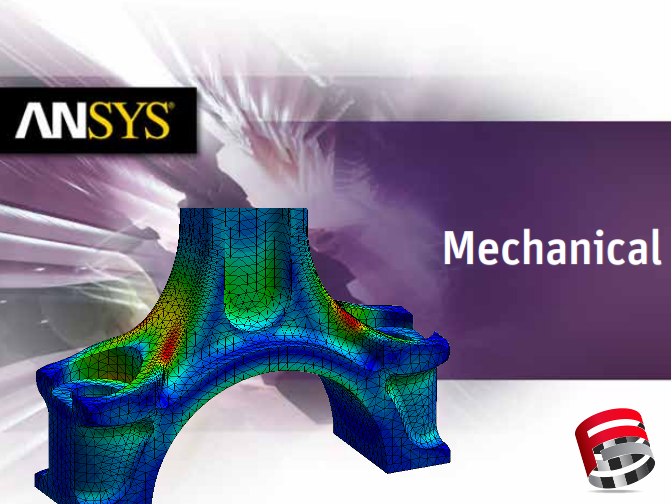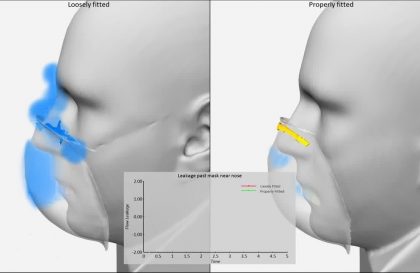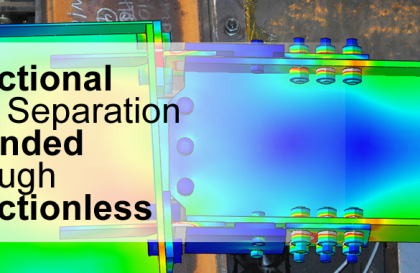The use of mesh quality metrics is an essential part of the automatic generation of unstructured initial meshes for finite elements. Without them, it is difficult to determine if the generated mesh possesses even the minimal quality necessary to undertake a computational analysis. This is especially true for the automatic generation of hexahedral meshes because few hexahedral mesh generation algorithms provide guarantees of even minimal mesh quality.
The “quality” of a mesh cell can be quantified in several ways. ANSYS performs several geometrical checks on mesh elements in order to determine their quality. These checks, or metrics are:
- Element Quality
- Aspect Ratio Calculation for Triangles
- Aspect Ratio Calculation for Quadrilaterals
- Jacobian Ratio
- Warping Factor
- Parallel Deviation
- Maximum Corner Angle
- Skewness
- Orthogonal Quality
Element Quality
The Element Quality is based on the ratio of the volume to the sum of the square of the edge lengths for 2D quad/tri elements, or the square root of the cube of the sum of the square of the edge lengths for 3D elements.
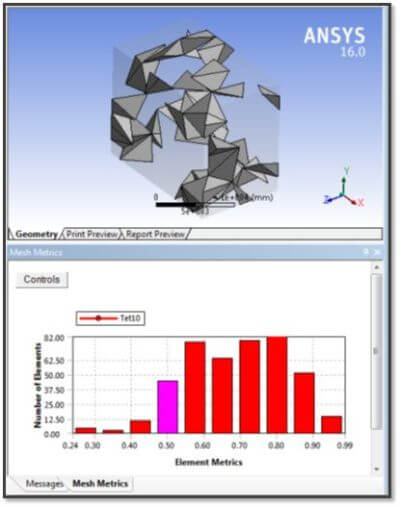
A value of 1 indicates a perfect cube or square while a value of 0 indicates that the element has a zero or negative volume.
Aspect Ratio
The aspect ratio of a triangle provides a comparison of the “height” and “width” of a triangle. It varies from 1 to infinite. A value of 1.0 indicates an equilateral triangle. The image below shows triangles with aspect ratios of 1 and 20.

The aspect ratio of quadrilaterals provides a comparison of a long side to a short side of the quadrilateral. It varies from 1 to infinite. A value of 1.0 indicates a square. The image below shows quadrilaterals with aspect ratios of 1 and 20.

Jacobian Ratio
The Jacobian ratio is a measurement of the shape of a given element compared to that of an ideal element. The ideal shape of an element depends on element type. The ideal Jacobian ratio is 1.0 and a good quality mesh has a Jacobian ratio between 1 and 10 for the majority of its elements (90% and above).
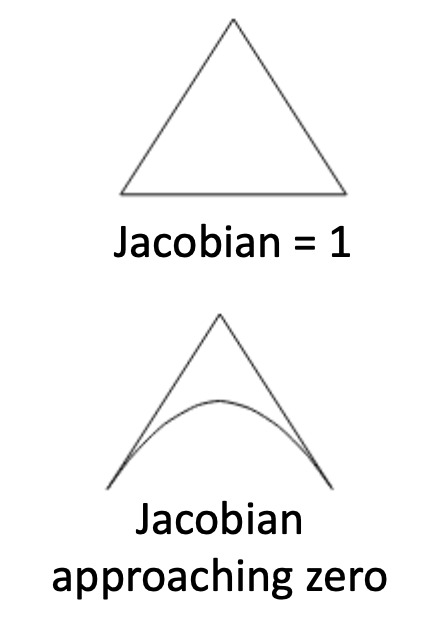
Warping Factor
The warping factor is computed and tested for some quadrilateral shell elements, and the quadrilateral faces of bricks, wedges, and pyramids. The ideal warping factor is 0. Warping is a measure of twisting and distortion and is best understood by looking at quadrilaterals with varying warping factors.

Parallel Deviation
Parallel deviation is a measure of how much two parallel sides of a shape deviate. The ideal parallel deviation is 0 for a square.

Maximum Corner Angle
This is the maximum angle between adjacent edges of an element. For a triangle the best maximum angle is 60 degrees. For a quadrilateral it is 90 degrees.

Skewness
Skewness is one of the primary quality measures for a mesh. Skewness determines how close to ideal (equilateral or equiangular) a face or cell is.

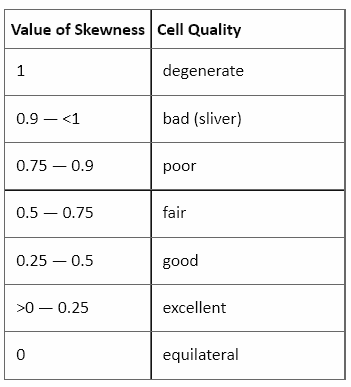
Orthogonal Quality
It involves the angle between the vector connecting two mesh nodes (or control volumes) and the normal vector for each surface integration point (n) associated with that edge. The range for orthogonal quality is 0-1, where a value of 0 is worst and a value of 1 is best.
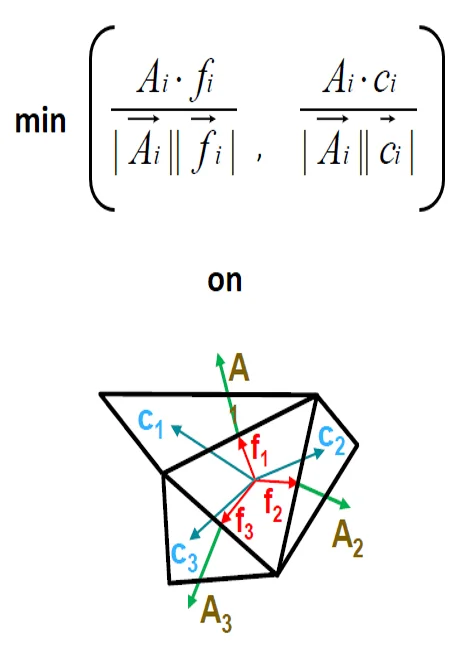
Overall
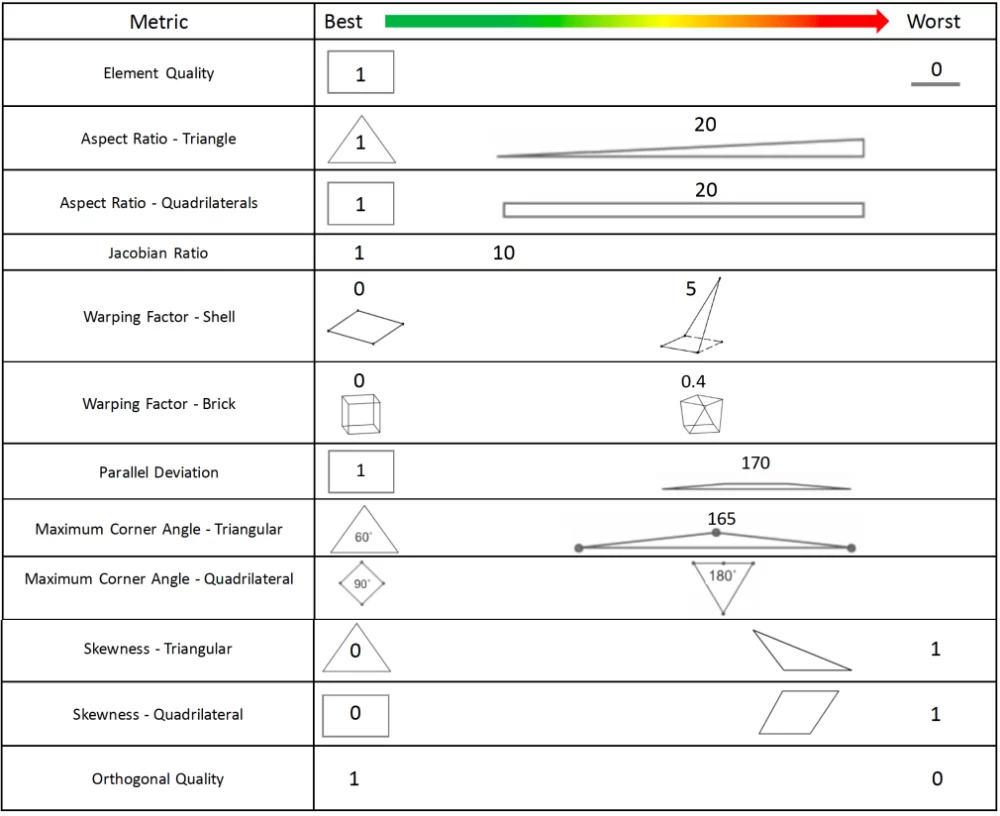
References
1-https://www.sciencedirect.com/science/article/pii/S0168874X02000707#:~:text=Mesh%20quality%20metrics%20are%20built,positions%20of%20the%20element%20nodes.
2-Featips.com



